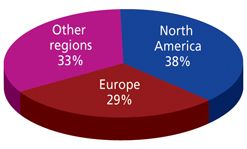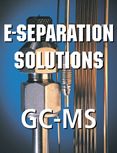Market Profile: Laboratory Gas Generators
Compressed gases have become an integral part of the laboratory. For many laboratory scientists, gases like hydrogen and nitrogen are used on a daily basis and are often taken for granted. The expense, concerns of safety, and unexpected downtimes has motivated users alter their approach and institute laboratory gas generators. Instead of using cylindered gases to supply the carrier or fuel gas supply, increasing number of laboratories have become accustomed to using a laboratory gas generators, which can supply gasses for analytical instruments such as GC, LC-MS, NMR, Purge, and others.
Compressed gases have become an integral part of the laboratory. For many laboratory scientists, gases like hydrogen and nitrogen are used on a daily basis and are often taken for granted. The expense, concerns of safety, and unexpected downtimes has motivated users alter their approach and institute laboratory gas generators. Instead of using cylindered gases to supply the carrier or fuel gas supply, increasing number of laboratories have become accustomed to using a laboratory gas generators, which can supply gasses for analytical instruments such as GC, LC-MS, NMR, Purge, and others.

2007 Laboratory Gas Generators Geographical Distribution
Gas generators employ different technologies, depending on the type and purity of the gas needed. The use of membranes and specialized adsorbents make it possible to generate gas such as nitrogen at very high purity levels (99.99999% purity). Improvements in compressor designs and electronic controls have strengthened the performance and value of gas generators in the laboratory. Major types of gas generators include nitrogen, hydrogen, TOC, zero air, oxygen and ozone generators.
North American and European laboratories dominate the laboratory gas generators market with a combined share of about two-thirds. North American laboratories have embraced this technology particularly with the rising cost of cylinder gases and concerns of safety and purity. Depending on the application, a lab could effectively recover the initial cost of a gas generator within several months of the purchase and, in the long-term, could save tens of thousands of dollars per year.
The foregoing data was extracted and adapted from SDi's Lab Equipment Market Brief: Laboratory Gas Generators. For more information, contact Glenn Cudiamat, VP of Research Services, Strategic Directions International, Inc., 6242 Westchester Parkway, Suite 100, Los Angeles, CA 90045, (310) 641-4982, fax: (310) 641-8851, e-mail: cudiamat@strategic-directions.com

Top Execs from Agilent, Waters, and Bruker Take the Stage at J.P. Morgan Healthcare Conference
January 16th 2025The 43rd Annual Healthcare J.P. Morgan Healthcare Conference kicked off in San Francisco earlier this week. Here’s what top executives from Agilent, Bruker, and Waters, discussed during the event.


